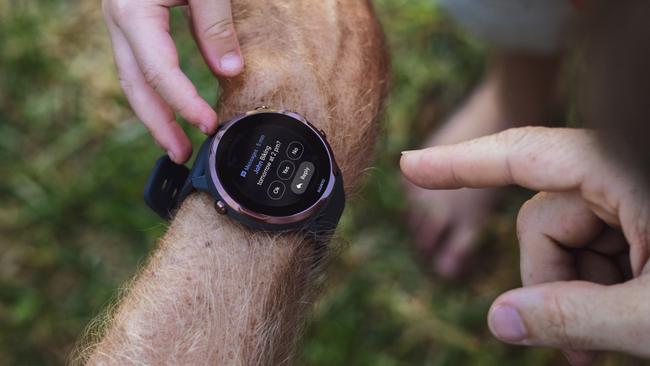Suunto taps into heat maps to create the ideal sports watch
The new Suunto 7 smartwatch is out now and it doesn’t require Street View for its global mapping features.
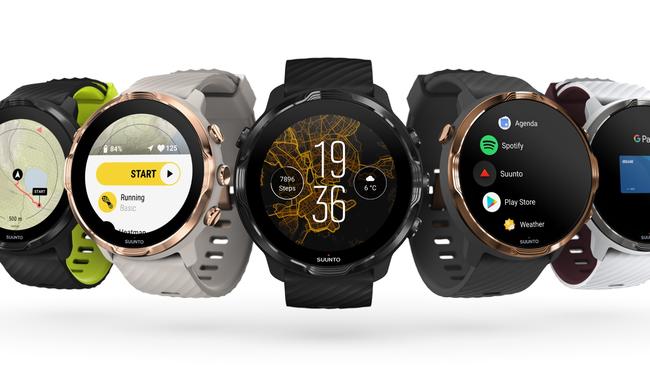
Finnish premium smartwatch maker Suunto is using a global mapping technology that doesn’t require Street View cars with cameras to rumble up and down millions of roads around the world. It’s called heat maps, and they are part of the new Suunto 7 smartwatch, now on sale here.
Suunto is based in Vantaa north of Helsinki, and for 80 years has been making navigation gear such as compasses, diving products and of more recent years, training watches.
Suunto has a colourful history. Tuomas Vohlonen founded the company in 1936 after creating a liquid-filled compass for trudging through the Arctic snow in the pitch black.
In 1939, a Suunto M-311 field compass saved the life of a Finnish soldier when he was hit by a Russian sniper’s bullet. The bullet hit the compass in his pocket.
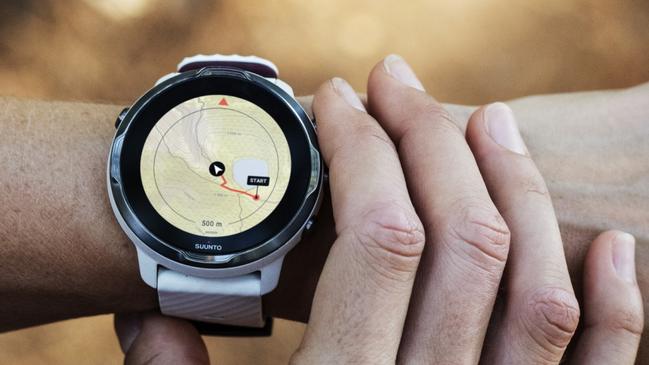
It started making orienteering and marine compasses in 1953 and produced its first diving compass in 1965.
Australians have been using Suunto training watches for years, but this is the first time the company has sold a smartwatch that runs Google’s Wear OS operating system. This is an old brand reaching a new audience.
Suunto welds on its own training applications to the Android platform. The two platforms exist side-by-side. You first link the Suunto 7 to Google’s Wear OS app on your phone. The app lets you control notifications and agendas, configure the Google Assistant, configure accounts and manage your personal data.
You normally would pair this watch with an Android phone but you can also pair it with an iPhone, with reduced synchronisation capability.
After configuring the phone with the Google Wear app, you then link it to the Suunto app, which collects metrics for more than 70 sports. The Suunto 7 is water resistant to 50m, and it will monitor indoor and outdoor swimming, surfing, paddle surfing and kitesurfing. There’s lap analysis for the pool.
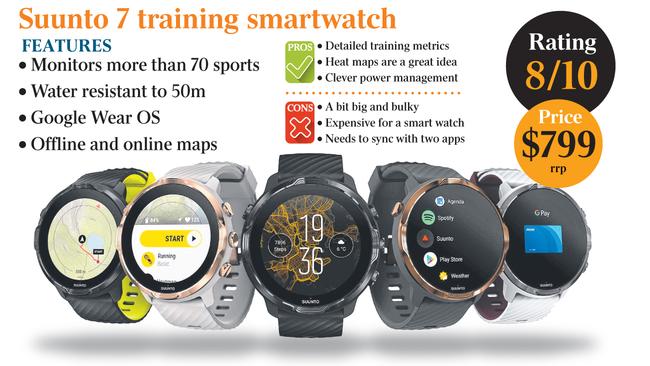
This is a big watch, with a 1.39-inch AMOLED display, and it is reasonably bulky, being 15.5mm thick. By comparison, the larger version of Apple Watch 5 is 11.4mm thick.
This watch has lots of buttons, four in all. The left-side button has four functions. A single press displays apps in a rotating carousel. It also can return you to the home screen. A long press summons the Google Assistant while a four-second press turns the watch off.
The top right-hand button is where you access Suunto’s specialist training apps.
You can configure the remaining two buttons to activate whatever function you want. Suunto says the dedicated buttons let you operate the watch in water or when wearing gloves, for example when skiing. Otherwise navigation is a case of swipe, tap, tap-and-hold and drag.
The heat maps are the most fascinating part of Suunto’s watch repertoire. Suunto collects non-identifiable route information from its users and displays them on a map. The brighter the colour (the heat), the more people have travelled that route.
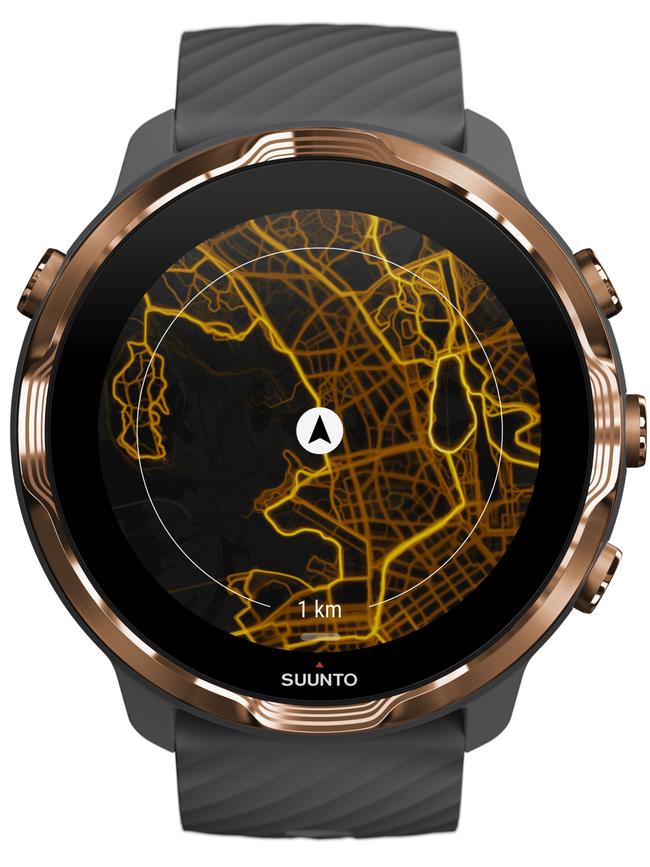
There’s a heat map for a variety of sports, including running, trail running, cycling, mountain biking and cross-country skiing. It means that if you are out jogging, you can identify the paths that previous Suunto joggers have used and travel along them with some confidence it’s a good route.
You might avoid the roads where Suunto users did not go. You are basically crowdsourcing training routes.
I tried using the cycling heat map to see whether the brightest lines matched the cycling paths around inner Sydney. It seems plenty of cyclists with older Suunto devices have travelled around my area going back in time because there are lots of brightly lit paths.
I cycle to work daily and all the backlit roads, laneways and easements that I use display reasonably brightly. However some main roads that I would never use were even more brightly coloured, which suggests many cyclists use the more dangerous main road routes.
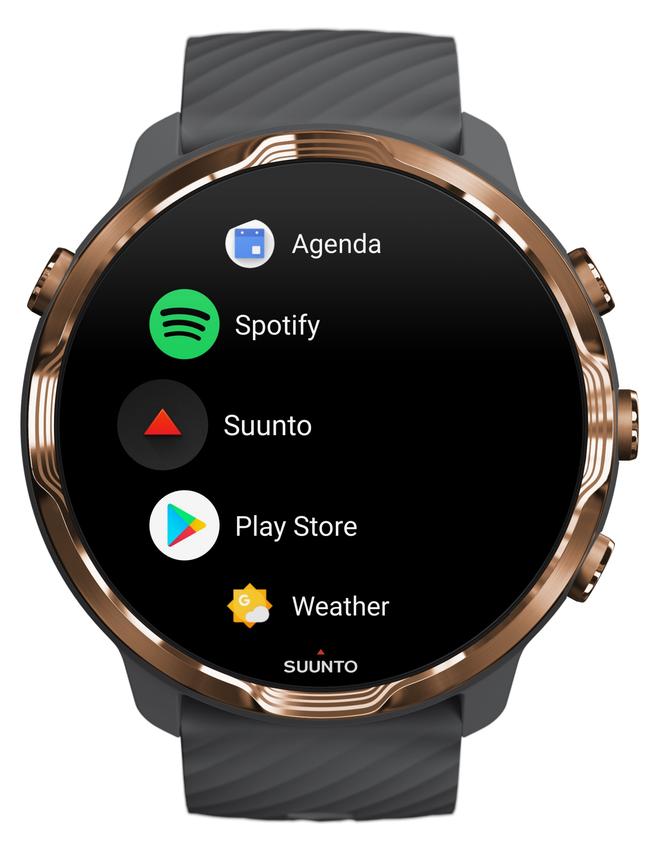
Nevertheless the bike paths that I used did light up. The cyclist heat map can be useful if you interpreted it intelligently.
Heat maps don’t offer the amazing detail that Google Maps provides through Street View. But they show users well worn training routes for various sports, without Suunto having to lift a finger to map them.
Suunto takes pride in using an advanced feature of Qualcomm’s Snapdragon Wear 3100 platform on this watch. It has two processors. One is a high performance quad core A7 processor. The other is low powered.
If programmers are skilful enough, they can switch off the battery-sucking main processor and delegate operation to the lower powered processor where the watch is performing simple tasks. This increases battery life.
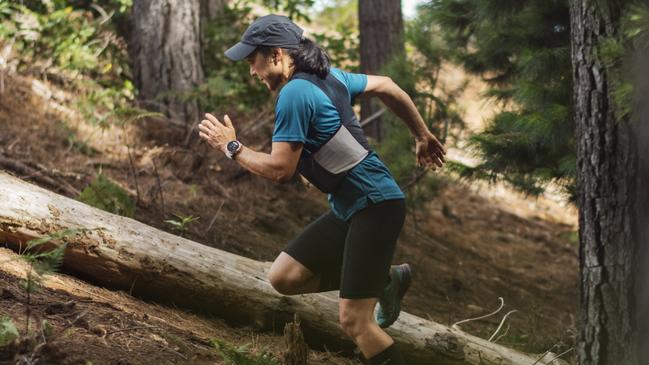
Suunto says it has achieved this when the watch is recording your running, walking or cycling, but doing precious else. You’re not using Bluetooth or monitoring messages. It’s unclear however if this is the case when you use GPS during training. I suspect it would need the main processor for this.
In addition to online maps, the Suunto app offers offline maps in a user friendly way. You nominate the area around you that you need, anything up to 4143km. I chose the 71km setting – the wider the area, the more storage it takes. You don’t have to download the maps yourself. The watch does this automatically when you next connect it to the charger, nominally overnight.
Suunto claims up to 12 hours in GPS tracking mode or up to 48 hours in daily use. My review watch consumed 42 per cent of battery in a day with some nominal exercise.
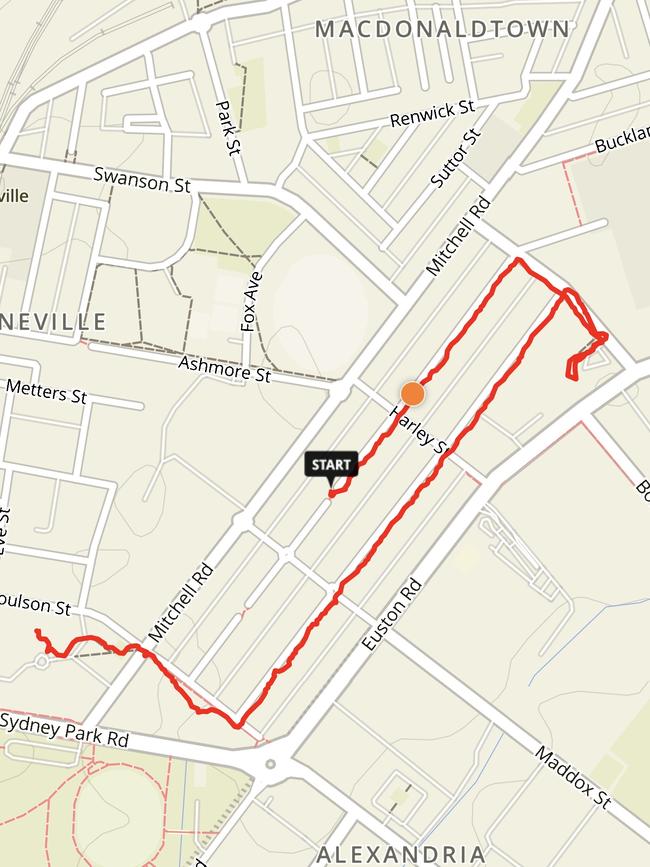
Suunto says this watch will suit people who want better tracking than provided by, say, Apple Watch. As with other fitness watches, some data is accessible on the watch, but most appears on the companion Suunto app on your phone.
When using the app for running or walking, you can examine your performance at different points of your journey, and see your pace, heart rate, and altitude. The app breaks workout metrics into five heart rate intensity zones, so you can check your performance when placing your body under increasing stress.
The usual metrics are duration, distance, and average and maximum pace. Suunto also records the time spent running uphill and downhill, and steps per minute. The app records ambient temperature; your performance on a very hot day might differ radically.
You can view the real-time heart rate on the watch and speed up, or slow down, to retain your heart rate within a certain range.
The Suunto 7 therefore sets out to offer more serious tracking if you need information beyond what a regular smartwatch will give you. However you’ll really need to want this functionality because at a recommended $799, it isn’t cheap. It’s available online and from retail partners such as JB Hi-Fi.
